The Significance of Extra Large Treasure Chests in Zelda
Intro
The Zelda series has continuously captivated players with its imaginative worlds, intricate puzzles, and a wealth of collectibles. Among the most iconic elements of these adventures is the extra large treasure chest. This is not just a simple gameplay feature but a portal to deeper meanings and rewarding experiences. Understanding the significance of these chests provides insight into the Zelda universe, revealing how they serve as not only a means of accumulating wealth but also as a rich narrative device.
In this article, we will delve into the multifaceted nature of the extra large treasure chest as a gameplay mechanism, narrative symbol, and representation of accomplishment. Whether you're a seasoned adventurer or a newcomer to Hyrule, the deeper appreciation of these chests awaits. Let's unpack this treasure trove of information, revealing how the grand chests in Zelda games enhance not just gameplay, but also the stories that unfold across various titles.
Prelude to Treasure Chests in Zelda
In the realm of Zelda, treasure chests are not merely collectibles. They serve as pivotal elements that enhance the gameplay experience and narrative depth. These chests symbolize triumph over challenges, offering players a tangible reward for their efforts. The significance of treasure chests goes beyond their physical appearance; they encapsulate the spirit of exploration that the Zelda series is renowned for.
Treasure chests, especially the extra large variety, hold unique importance in the player’s journey. They present an opportunity for designers to reward players not just for progress, but also for their willingness to engage with the game world on a deeper level. Players often experience a thrill upon discovering these chests, reinforcing a sense of achievement and satisfaction.
Historical Context of Treasure Chests
Delving into the historical context, treasure chests in Zelda can be traced back to the early games in the franchise. From the very beginning, they have served as convenient repositories of rewards. In the initial titles, chests were simple boxes that contained useful items—like rupees or bombs—important for further progression.
As the series evolved, the design of chests also saw changes; initially pixelated rectangles morphed into intricately designed chests that reflected their contents. Hints, such as the sparkling effects around a chest, signaled a sense of anticipation. This historical evolution speaks to the franchise's dedication to enriching gameplay, consistently integrating loot systems that resonate with players.
The Role of Treasure in Zelda Gameplay
Treasure occupies a unique position in Zelda's gameplay dynamics. It motivates players to explore every nook and cranny of Hyrule. Finding an extra large treasure chest often signifies a significant achievement, which can alter a player's strategy. These chests are alluring not just for their size, but the potential rewards they conceal. The items range from powerful weapons to essential upgrades, which can greatly impact combat dynamics.
Moreover, treasure hunting leverages the psychological aspect of reward—players are incentivized to wander off the beaten path, solving puzzles, defeating enemies, or traversing treacherous terrains. This encourages exploration and discovery, enriching the overall narrative and gameplay experience.
In summary, these treasure chests encapsulate a crucial part of the Zelda experience. Each chest, especially the extra large ones, tells a story; whether signalling triumph, creating a sense of wonder, or enticing players to immerse themselves further into the adventure. Understanding their role deepens appreciation for the artistry behind Zelda's world.
The Extra Large Treasure Chest Defined
The concept of the extra large treasure chest holds a distinct place in the realm of Zelda, serving not merely as a larger storage unit for items but also as a critical design element that encapsulates the spirit of adventure and reward. By defining this segment, we can appreciate how size, aesthetics, and functionality unite to create not just a gaming feature, but an iconic symbol of progression and achievement.
Dimensions and Design
When we talk about dimensions, the extra large treasure chest is typically much grander than its standard counterpart. Visually, it often boasts an ornate design, complete with elaborate carvings and vibrant colors, which stands out against the game’s backdrop. These chests are designed not only to catch the player’s eye but to evoke a sense of wonder and anticipation. The sheer size often suggests that greater rewards await, making the moment of discovery exhilarating.
The design aspects can evoke specific emotions in players. For instance, imagine navigating through the dark, mysterious dungeons of Ocarina of Time only to finally stumble upon one of these colossal chests basking in the faint glow of treasure. This experience is intentional. The developers meticulously craft both the aesthetic and physical presence to enhance the player's emotional journey.
In many instances, the texture and sound of opening these larger chests further amplify the excitement. The added weighty creak and the animation of the chest springing open can create an engaging sensory experience that brings a genuine satisfaction to the player. It’s these small details that portray the extra large treasure chest as not just a storage solution but a pivotal narrative device throughout the series.
Differentiating from Standard Chests
Identifying the unique characteristics of the extra large treasure chest in contrast to standard chests is crucial in understanding its role. While standard chests might provide basic rewards or items crucial for progression, the extra large treasure chest often contains items of higher rarity and significance.
For example, in Breath of the Wild, players can accumulate a variety of weapons and materials, but finding an extra large chest may yield rare armaments or unique armor sets that change the course of gameplay. These rewards often require more effort to obtain, such as completing tougher dungeons or defeating formidable foes, solidifying their importance in player strategies.
Furthermore, extra large chests can carry other vital gameplay mechanics. Sometimes they hold key items that unlock new areas or abilities, blending their role as treasure containers with franchise lore. This distinct difference plays a fundamental part in shaping player expectations. Where a standard chest might elicit a casual response, the sighting of an extra large chest could quicken one’s heartbeat as the implications of its contents unfold.
"The extra large treasure chest symbolizes a rite of passage, rewarding players not just with items, but with the recognition of their skill and dedication."
In summary, the extra large treasure chest stands as a multi-layered element within the Zelda series, representing not just gameplay mechanics or aesthetics, but also the heart of what it means to embark on an adventure. By examining these dimensions and distinctions, we can appreciate the multifaceted roles these treasures play in enriching the overall gaming experience.
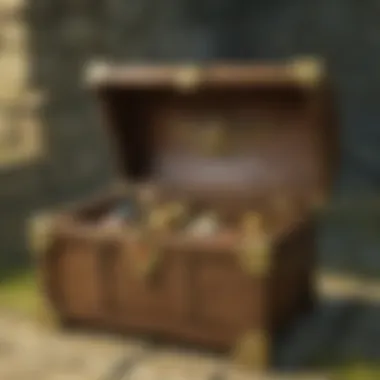
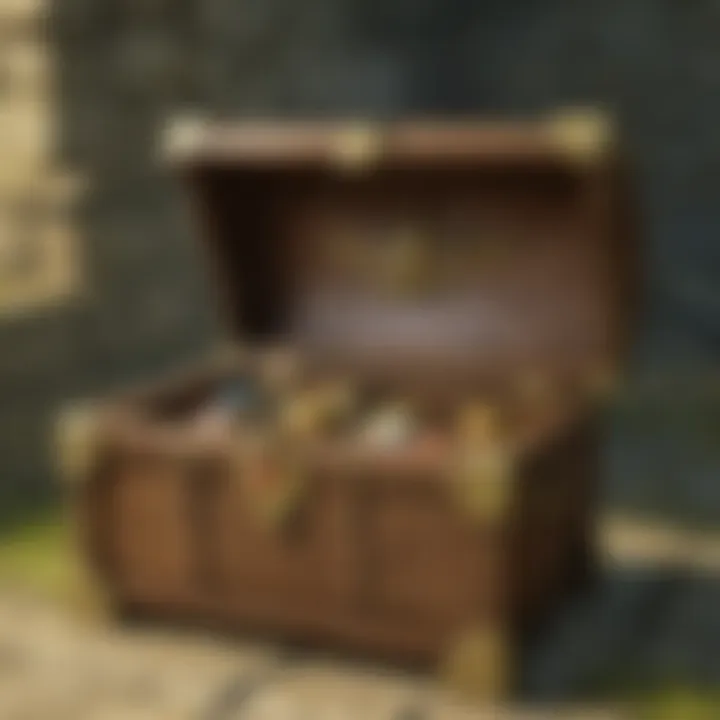
Gameplay Mechanics Involving Extra Large Treasure Chests
In the landscape of the Zelda series, extra large treasure chests stand as significant markers of progression and achievement. Their presence in gameplay mechanics leaves players with a sense of expectancy and excitement. By being larger and more ornate than standard chests, these treasures represent not just a reward, but a culmination of effort and skill. Unpacking the mechanics behind these chests elucidates their role beyond mere storage for items.
Unlocking and Accessing Extra Large Chests
To access an extra large treasure chest, players often encounter a series of hurdles or puzzles that demonstrate their readiness. These mechanics can range from intricate key-finding missions to defeating formidable foes guarding the loot. A chest might remain locked until certain conditions are met. For example, in The Legend of Zelda: Breath of the Wild, some of these chests are placed deep within enemy camps or atop treacherous cliffs.
The process of unlocking can involve using items like the Master Key, which, in various titles, symbolizes the mastery of game mechanics overall. Consider the use of specific items such as bombs or abilities that are acquired as the player advances—only then can they lay claim to the boons within these grand chests.
Importantly, there is often a narrative thread that ties the unlocking of these chests to the player’s journey. It’s not just about the prize, but about how that victory relates to the larger quest.
Rewards and Their Impact on Player Strategy
The contents of extra large treasure chests carry substantial weight in terms of strategy and gameplay. Unlike typical chests that might yield consumables or crafting materials, these larger chests frequently contain rare items or significant upgrades that can redefine a player’s approach to challenges.
For example, obtaining a powerful weapon can change tactics significantly. Players might go from a defensive playing style to a more aggressive one, emboldened by the newfound prowess. Moreover, frequently, these rewards are heavily tied to the game's lore, adding layers to their significance.
- Highly potent gear
- Unique collectible items
- Vital resources for progression
Ultimately, the rewards impact not just the current gameplay but also how players prepare for future encounters.
As players dissect the motivations for seeking out these treasure chests, they discover that each reward is more than just a bonus; it's a tool that shapes the player's journey, delivering a sense of accomplishment while encouraging strategic thinking.
"The larger the treasure, the more intricate the challenge—both unlocking it and making use of what's inside."
Narrative Functions of Extra Large Treasure Chests
When players explore the world of Zelda, they encounter items that aren't just random prizes; they often play a critical role in the overarching narrative. Extra large treasure chests are particularly significant, serving as a bridge between gameplay and storytelling. They do more than just store loot; they help convey character development, plot points, and thematic elements that resonate with the player on a deeper level.
Story Development Through Loot
The panels of loot within these extra large chests often reveal much about the world and its inhabitants. For instance, finding a legendary sword inside a grand chest not only signifies a new power for Link but hints at the legacy that this weapon carries within the realms of Hyrule. These moments create a narrative continuity where treasures are not mere trinkets, but rather pieces of the puzzle that represent the struggles, victories, and histories of the land.
When players open an extra large treasure chest, they often receive a detailed item description that provides lore and context. Take the Master Sword for example. Acquiring it implies a rite of passage, and collecting it becomes an act that deepens the player's understanding of Link's role as the chosen hero. Loot thus becomes a vehicle for storytelling. A well-crafted narrative seamlessly integrates items into player progression while feeding into the broader story arc.
"The treasure chest symbolizes the hope and hard work of the hero; unlocking it is akin to unraveling a hidden chapter of Hyrule's historical narrative."
Reflecting the Hero's Journey
The extra large treasure chest also mirrors the classic elements of the hero's journey. In many instances, opening these chests serves as a metaphorical reward for the obstacles Link faces. Each battle or puzzle culminates in a moment of glory when the chest unlocks, symbolizing not just the success of defeating an enemy, but also the growth in Link's capabilities and character. After all, every hero needs tools at their disposal.
For example, when Link faces off against Ganon, finding a powerful shield in an extra large chest not only marks a moment of triumph but reinforces the narrative about preparation and heroism. Each upgrade represents not just a material gain but an emotional and psychological journey the player undergoes. Link transforms through his adventures, and each chest reflects this transformation vividly.
The Psychological Appeal of Treasure Chests
The allure of treasure chests in the Zelda series transcends mere gameplay mechanics; it strikes at the core of human psychology. This section dwells deep into how these extra large treasure chests resonate with players on an emotional and cognitive level. Players are often drawn to these chests not only for the rewards they contain but also for the palpable thrill of discovery and the sense of accomplishment upon opening them. With each chest, players engage in a dance of anticipation and surprise, fostering a deep connection between them and the game.
The Thrill of Discovery
When players encounter an extra large treasure chest, there’s an immediate thrill that accompanies the sight, transforming routine gameplay into a mini-adventure. It’s more than just an item to collect; it’s an invitation to explore, to engage with the world of Hyrule in a new way. Picture yourself navigating a dark cave or scaling a cliff only to be greeted by that captivating chest, shining in the dim light – it’s almost like stumbling upon buried pirate gold!
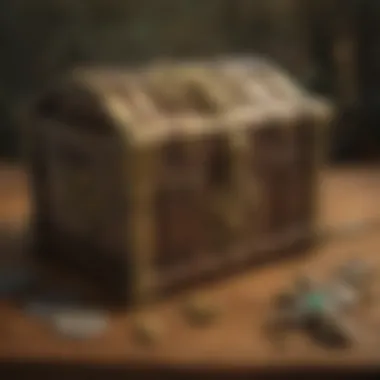
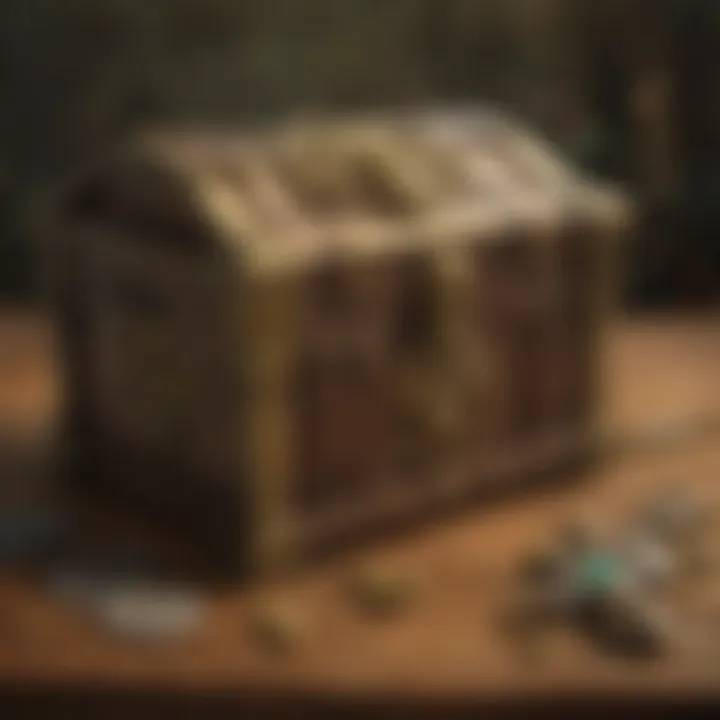
The psychological thrill here is multifaceted. The unpredictability of what lies inside the chest fuels curiosity. Will it be a legendary sword, a rare gem, or perhaps a unique set of armor? This uncertainty taps into the brain’s reward pathways, reinforcing the player’s desire to continue exploring. The drama of the moment is accentuated by the difficulty sometimes involved in reaching these chests. Players often invest significant time and effort to uncover them, and that build-up intensifies the eventual reward. In the end, what’s inside feels almost secondary compared to the satisfaction of overcoming challenges and earning the right to open the chest.
"The journey toward the treasure can be as rewarding as the treasure itself."
Reward Mechanism in Gaming
The concept of reward mechanisms is deeply embedded in the framework of game design. Treasure chests serve as a critical component of this such that they contribute to a loop of achievement and gratification. When players open an extra large treasure chest, they aren’t just receiving items — they’re experiencing a psychological boost. This boost often comes in the form of dopamine release, a chemical in the brain associated with pleasure and reward.
Simply put, the more valuable and rare the contents of the chest, the stronger the positive response from the player. This is why game designers carefully tailor the rewards within these chests. If a player discovers a chest filled with mundane items, it can lead to disappointment. However, a chest brimming with powerful gear incites joy and excitement.
Moreover, the allure of these chests influences player behavior and decisions throughout the game. They may alter a player's playstyle, encouraging exploration and experimentation, as players seek to uncover these treasures. Potential rewards also fuel competition in multiplayer settings, driving players to collaborate, trade, or even engage in friendly rivalry over who can uncover more treasure.
As Zelda continually evolves with each installment, the design and presence of treasure chests adapt, heightening both their appeal and impact on gameplay. The promise of what’s inside keeps players returning, maintaining engagement with the story while enriching the experience of traversing Hyrule.
Iconography of the Extra Large Treasure Chest
The representation of the extra large treasure chest in the Zelda series goes beyond mere graphics. It's a concept deeply rooted in player psyche and game design. It serves as a touchstone for adventurers, signaling rewards, achievements, and personal milestones within the game. When players see one of these magnificent chests, there’s an immediate spark of excitement—a sense of anticipation akin to turning the last page of a gripping novel. Underneath the pixelated surface lies a wealth of meaning, both narratively and symbolically.
Visual Representation in Various Games
Throughout the Zelda franchise, the visual depiction of treasure chests varies greatly, but the extra large ones often have standout characteristics. For example, in The Legend of Zelda: Breath of the Wild, these chests often sport eye-catching designs, adorned with intricate patterns and vibrant colors. The size is not just a trivial detail; it’s an immediate indicator of significance.
- Distinct Features: The extra large chests are typically larger than their regular counterparts, showcasing ornate hinges and detailed carvings which often reflect the area’s culture or gameplay theme.
- Color Coding: The colors often play a significant role. For instance, golden or jeweled chests signify the most coveted rewards, whereas wooden chests suggest modest gains.
- Animation Effects: When opening these chests, players are treated to flashy animations that heighten the sense of drama. The slow opening and soft glow of the contents signify that something special is at hand.
This diverse visual representation is crucial in maintaining player engagement, as it enriches the overall aesthetic of the games and enhances the exploration experience.
Cultural Symbolism of Treasure Chests
The cultural implications of treasure chests—especially the extra large variety—are noteworthy. These chests have become symbols of prosperity, adventure, and the worth of effort. In many cultures, the act of seeking treasure is synonymous with the journey of self-discovery and achievement. The Zelda series taps into this archetype effectively.
- Collective Experience: Games serve as modern folklore where shared experiences of discovery and reward unite players across generations.
- Reflections of Society: The treasure chests reflect societal desires for success and recognition. Players connect with the notion of seeking prizes as a metaphor for life’s journey, where rewards are earned through challenges and exploration.
- Journey Motivation: The allure of the extra large treasure chest often drives players through intricate quests and challenges, tying their engagement with the narrative arc of heroism found in mythological tales.
"Zelda’s treasure chests have become more than gameplay elements; they embody the spirit of adventure and the quest for knowledge, mirroring the human pursuit of meaning across cultures."
In summary, the iconography of the extra large treasure chest holds significant weight in the Zelda universe. It combines visual flair and rich symbolism, which resonate within the broader context of player motivation and cultural narrative.
Comparative Analysis with Other Game Series
In considering the role of the extra large treasure chest within the Zelda series, it's crucial to place it alongside similar mechanics found in other gaming franchises. This comparative analysis not only highlights the unique features of Zelda’s treasure system but also sheds light on the universal themes of exploration and reward present in video games.
Similar Mechanics in Different Genres
When looking at the broader landscape of gaming, many genres have adopted similar treasure retrieval systems. For instance, in the Monster Hunter series, players uncover loot from slain beasts, often in sizable chests after completing quests. Likewise, Dark Souls integrates expansive chests within its intricate world, rewarding players with powerful items crucial for progression. Both games create a sense of anticipation, leading players to wonder what treasures might lay behind the next door, or within the next area.
- Adventurous Element: In these instances, the interaction with treasure chests serves not just a utilitarian purpose, but enhances immersion and excitement during the exploration.
- Player Engagement: The experience is bolstered by the thrill of discovery, as players are drawn into the game’s world, hoping to find unique weapons or rare crafting materials.
- Visual and Audio Cues: Different games implement striking visuals or sound effects to signify the significance of a treasure chest. For example, the gleam of a chest or the sound of shimmering coins evokes the classic sense of achievement across genres.
Contrasts with Other RPGs
However, despite these similarities, the extra large treasure chest in Zelda holds distinct advantages over similar elements in other RPGs. When we examine franchises like Final Fantasy or The Elder Scrolls, we see differences in how treasure chests function and the narrative implications they carry. Here are some prominent contrasts:
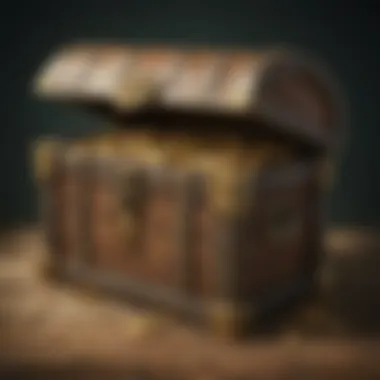
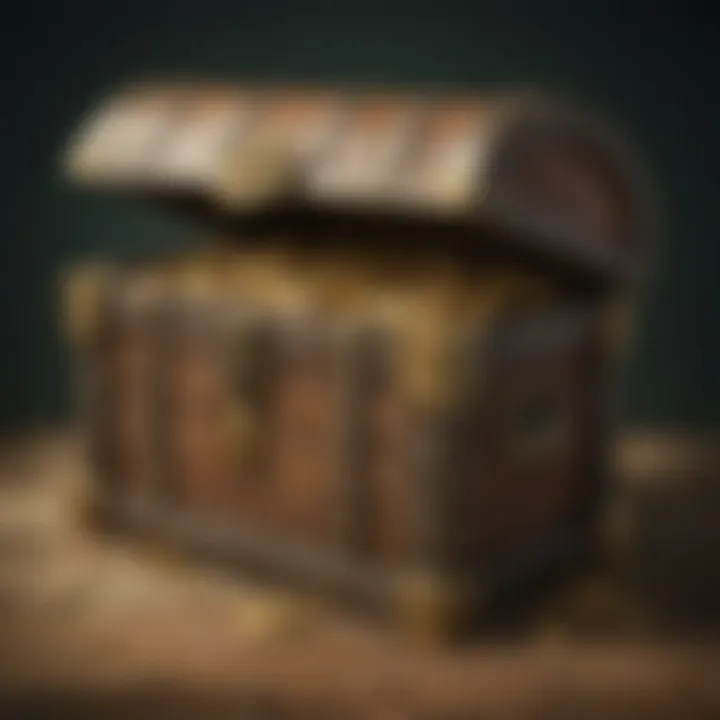
- Narrative Integration: In Zelda, treasure chests often play a pivotal role in advancing the plot. The character Link frequently discovers items that not only enhance abilities but also unlock new areas, fundamentally altering gameplay dynamics. In contrast, treasure found in other RPGs can sometimes feel like surface-level rewards with little impact on the overarching story.
- Puzzle Elements: The inclusion of puzzle-solving as a precursor to accessing Treasure Chests can also be cited as a hallmark of the Zelda franchise. Other RPGs sometimes lack a deep connection between treasures and surrounding environmental challenges, where opening a chest might feel like an afterthought rather than an integral mission component.
- Cultural resonance: Zelda’s lore creates a deeper emotional payoff associated with these treasures. Each chest can signify heroic accomplishments or pivotal moments in the game, while in other RPGs, the loot can feel rather generic or disconnected from a character’s journey.
In sum, while mechanics related to treasure retrieval are present across various gaming genres, the extra large treasure chest in Zelda stands out due to its intertwining of gameplay, narrative, and cultural resonance. This interplay heightens not just the excitement surrounding discovery, but also enriches the overall experience for the player, making every find feel uniquely part of their heroic journey.
Fan Reception and Cultural Impact
The fan reception of extra large treasure chests in the Zelda series transcends mere gameplay mechanics; it's a phenomenon that resonates deeply within the gaming community. These chests symbolize the thrill of adventure and discovery that defines the Zelda experience, and fans often discuss their significance in forums and social media. The dialogue surrounding these elements offers insight into how players perceive their roles, turning simple unlockable rewards into complex symbols of accomplishment.
Community Theories and Discussions
The discussions in the Zelda fandom illuminate various theories surrounding the extra large treasure chests. Players frequently speculate about the significance of specific items found within these chests. For instance, in The Legend of Zelda: Breath of the Wild, some have pointed out how the radiant armor found exclusively in these larger chests contributes to Link’s growth and adaptability, mirroring the player's own journey of discovery.
Moreover, forums like Reddit are abuzz with theories concerning the lore tied to treasure chests. One popular theory suggests that the chests serve as physical manifestations of Hyrule’s rich history, acting as vessels for both reward and storytelling. This kind of dialogue encourages a collaborative exploration of the narrative layers within Zelda, unifying fans through shared understanding.
Legacy of Treasure Chests in the Zelda Fandom
The legacy of treasure chests, especially the extra large ones, is profound within the Zelda fandom. These chests have become a vital part of the game's identity, representing a sense of achievement in overcoming challenges. As players reflect on their experiences, the chests are remembered not just as containers for items, but as critical milestones in their own adventures.
For instance, many players from The Legend of Zelda: Ocarina of Time reminisce about the exhilaration felt when uncovering hidden treasures, an experience that has shaped their approach to new installments in the series.
Additionally, the treasure chest's iconic design has solidified its place in game design history. It's often imitated in other titles, highlighting its impact beyond just Zelda.
Ultimately, the discussions and theories surrounding the extra large treasure chests not only enrich player experience but also fortify the cultural landscape that Zelda inhabits, ensuring its lasting relevance in the gaming tapestry.
The Future of Treasure Chest Design in Upcoming Zelda Titles
The landscape of game design continues to evolve, and treasure chests, particularly the extra large variety, are not exempt from this progression. Understanding tomorrow's designs in Zelda titles means delving deep into player experiences and technological advancements. This section explores the expected shifts that will affect how these chests look, feel, and function within the broader gameplay context.
Innovative Concepts in Game Design
As game developers look to enhance player engagement, new concepts in game design could redefine how extra large treasure chests are perceived and interact with the game world. Here are a few innovative ideas that may emerge:
- Dynamic Chests: Imagine treasure chests that adapt according to the player’s journey. An extra large chest could change its external appearance or functionality based on the player’s collected achievements or current quest status. For instance, a chest that appears adorned with trophies as the player completes significant milestones could encourage exploration.
- Augmented Reality Integration: With advancements in technology, there’s the potential for augmented reality (AR) features to be incorporated within treasure chests. Players might interact with these chests using real-world motions, turning opening a chest into an immersive experience where they can uncover loot as if it’s right before them.
- Puzzle Integration: The future could also see chests that present players with unique puzzles to solve before gaining access to the treasure. This would not only prolong the excitement but also place an emphasis on the intellectual challenge, rewarding players who think outside the box.
In each of these proposed concepts, the goal would be to make the act of uncovering treasure feel fresh and rewarding, ensuring that the experience ties deeply into the core themes of adventure and discovery intrinsic to the Zelda franchise.
Anticipating Player Expectations
With each new installment of the Zelda series, player expectations grow. It’s essential for developers to understand what players desire from extra large treasure chests in future titles. Here are a few trends and considerations:
- Customization: Players appreciate the ability to modify or personalize their treasure chests. Having options to change colors, designs, or even inputs for unlocking them can create a more personal connection.
- Story Elements: Players are likely to desire richer narrative elements tied to treasure chests. They might expect that some chests reveal backstories or lore pieces related to Hyrule’s expansive history, enhancing their overall engagement with the game world.
- In-game Economy Connections: With many players thinking critically about in-game resources, it’s probable that future designs will integrate treasure chests with the overall economic framework of the game. Chests could vary in value based on supply and demand scenarios within the game, providing deeper layers of strategy to resource collection.
“Treasure chests should be much more than simple loot containers; they should be part of the story.”
This forward-thinking approach helps ensure that the Zelda franchise continues to resonate with both new recruits and seasoned veterans. Ultimately, as the demands and tastes of players evolve, so must the treasure chests that serve as both a reward and a reflection of their progress.
Finale: The Enduring Appeal of the Extra Large Treasure Chest
Throughout the Zelda series, the extra large treasure chest stands as a distinctive and potent symbol. Its design and function are not just about aesthetics; they play a critical role in defining the overall gameplay experience. These chests aren’t just bigger boxes holding items; they are gateways to adventure, exploration, and player fulfillment. Their importance goes beyond mere game mechanics, resonating deeply with the themes of the Zelda universe.
Summing Up Its Importance in Game Mechanics
The mechanics surrounding the extra large treasure chests serve as a significant part of player engagement in the Zelda games. When players come across one of these chests, there's an almost palpable anticipation that builds up. This excitement isn't just for the loot inside but stems from the understanding that accessing these chests often involves completing a challenging puzzle or defeating a formidable enemy.
- Rewarding Challenge: The design of the extra large treasure chest often requires players to solve intricate challenges, which enhances the satisfaction derived from unlocking them. Unlike standard chests, these showcase larger rewards or unique items that can dramatically alter gameplay dynamics.
- Strategic Value: Players must strategize effectively to unlock these chests. The thought process involved in preparing for what lie ahead adds a layer of depth to gameplay. It's not just about the destination, but also the journey that leads to these monumental treasures.
As players unlock these chests, they feel a sense of achievement that reinforces their progress in the game. The extra large treasure chest serves as a benchmark for player success, making each discovery memorable and rewarding.
The Lasting Legacy Within the Zelda Series
The legacy of the extra large treasure chest within the Zelda series is undeniable. Over the years, this element has become iconic, deeply ingrained in player culture. For many, these chests symbolize the essence of what makes the Zelda games truly unique.
- Catalysts for Narrative: Frequently, these chests reveal crucial items that advance the storyline, such as new weapons or transformative artifacts. Thus, they play a pivotal role in the larger narrative, encouraging players to explore every nook and cranny of the game world.
- Cultural Impact: Conversations among fans often revolve around unforgettable moments tied to these chests. This has led to a rich tapestry of theories and speculation about their significance. Players find themselves bonding over shared experiences of discovery and triumph.
In sum, the extra large treasure chest is much more than a gameplay feature; it encapsulates the adventure and wonder that fans chase in every installment of Zelda. Its enduring presence across the series ensures that players continue to be captivated by the thrill of discovery.







